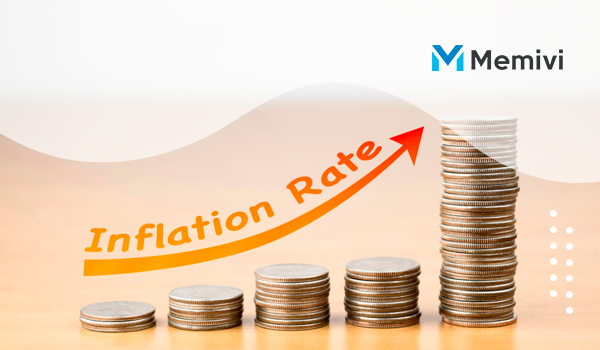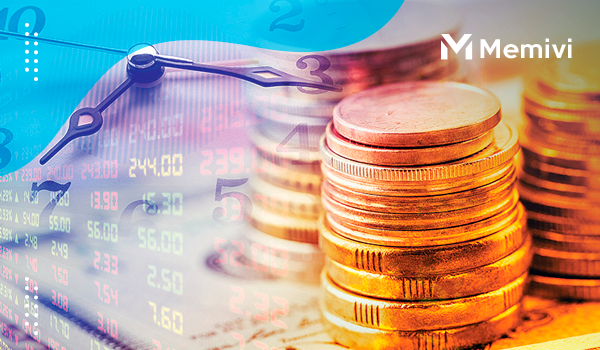
Inflation is one of the critical indicators of an economy’s health and stability. It reflects the rate at which prices of goods and services are rising over time, and it has far-reaching implications on industries and individuals alike. India’s inflation rate has been a topic of interest for many years, and it continues to be so.
This post aims to analyze the latest data on India’s inflation rate, with a particular focus on August 2023. We will examine the factors that contributed to this rate, as well as its impact on the economy and the average Indian citizen. By the end of this post, you will have a better understanding of the inflation situation in India and the steps taken by the government to control it.
Overview
The August 2023 inflation data provides a comprehensive overview of the current state of India’s economy. Inflation, as measured by the Consumer Price Index (CPI), is a crucial indicator that reflects the general price level of goods and services in the country.
According to the latest report, the inflation rate in August 2023 stood at 7.6%, slightly higher compared to the previous month. This indicates a moderate increase in prices, suggesting a potential impact on the purchasing power of consumers. Breaking down the data further, it is evident that the key drivers of inflation were primarily food and fuel prices. The cost of essential food items such as vegetables, fruits, and pulses witnessed a significant surge, contributing to the overall inflation rate.
Additionally, the rising fuel prices, influenced by global market trends, also played a substantial role in driving up inflation.
Furthermore, core inflation, which excludes the volatile food and fuel components, remained relatively stable, indicating a balanced economic situation. This suggests that the inflationary pressures were mainly driven by external factors rather than internal factors. It is important to note that inflation has implications for various stakeholders in the economy.
For consumers, a higher inflation rate means increased living expenses and reduced purchasing power. Businesses, on the other hand, may experience rising production costs, impacting their profitability and pricing strategies. Additionally, policymakers closely monitor inflation data to make informed decisions regarding monetary and fiscal policies to manage inflationary pressures and ensure economic stability.
Influences of global factors on India’s inflation rate
The inflation rate in India is influenced not only by domestic factors but also by global factors. In today’s interconnected world, it is essential to understand how international events and trends can impact the economic stability of a country. One significant global factor that affects India’s inflation rate is the price of crude oil.
As one of the largest importers of oil, India heavily relies on international oil prices. Fluctuations in global oil prices can have a direct impact on the cost of transportation, manufacturing, and overall production costs. When global oil prices rise, it can lead to higher prices of essential goods and services, thus contributing to inflationary pressures.
Future projections and predictions for inflation in India
As we analyze the August 2023 data on India’s inflation rate, it is essential to also consider future projections and predictions for this economic indicator. While predictions can never be completely accurate, they provide valuable insights for businesses, policymakers, and individuals to make informed decisions.
Economists and financial institutions employ various methodologies and models to forecast inflation. These projections are based on a range of factors, including macroeconomic indicators, government policies, global market trends, and consumer behavior. By examining these factors, analysts can attempt to gauge the direction and magnitude of inflation in the coming months and years.
Effects of inflation on the Indian economy and consumers
The inflation rate plays a significant role in shaping the Indian economy and impacting consumers’ daily lives. Inflation refers to the general increase in prices of goods and services over time, resulting in a decrease in purchasing power. The effects of inflation are far-reaching, touching various aspects of the economy and influencing consumer behavior.
One of the primary effects of inflation is the erosion of the value of money. As prices rise, the purchasing power of consumers diminishes, leading to a decrease in their standard of living. Essential items such as food, housing, and healthcare become more expensive, putting a strain on household budgets. This can particularly impact vulnerable sections of society, such as low-income individuals and those living below the poverty line.
Inflation also has implications for businesses and the overall economy. Rising costs of production, driven by increasing prices of raw materials and wages, can lead to reduced profitability and competitiveness. This may result in companies cutting back on investments, expansion plans, and job creation, thereby affecting economic growth.
Additionally, inflation can create uncertainty and volatility in financial markets. Investors may become cautious, prompting them to reallocate their investments into assets that offer protection against inflation, such as gold or real estate. This can lead to fluctuations in stock prices, exchange rates, and interest rates, further impacting the overall economic stability.
Moreover, inflation can influence consumer behavior and spending patterns. Consumers tend to be more cautious during times of high inflation, prioritizing essential purchases and cutting back on discretionary spending. This can have a ripple effect on industries such as retail, hospitality, and entertainment, as demand for non-essential goods and services declines.
Analyzing India’s inflation data

In conclusion, analyzing India’s inflation rate based on the August 2023 data provides valuable insights into the country’s economic landscape. Here are some key takeaways from this analysis:
- Inflationary pressures: The data shows that India experienced a moderate increase in inflation during the month of August 2023. This indicates some inflationary pressures in the economy, which could be attributed to various factors such as rising commodity prices or supply chain disruptions.
- Impact on consumer purchasing power: The inflationary trend has implications for the purchasing power of consumers. As prices rise, individuals may face challenges in maintaining their standard of living, especially if their income growth does not keep pace with inflation. This highlights the need for individuals to carefully manage their finances and adjust their spending patterns accordingly.
- Monetary policy implications: The central bank plays a crucial role in managing inflation and maintaining price stability. Based on the data, policymakers may consider taking appropriate measures, such as adjusting interest rates or implementing targeted policies, to mitigate the impact of inflation on the economy.
- Sector-specific analysis: It is important to delve deeper into the inflation data to understand its sector-specific implications. Some sectors may be more affected by inflation than others, and analyzing these nuances can provide valuable insights for businesses, investors, and policymakers.
- Long-term implications: While the analysis focuses on a specific month, it is essential to consider the long-term implications of inflation trends. Understanding the underlying factors driving inflation can help anticipate future trends and make informed decisions, whether it be in personal financial planning or strategic business decision-making.
Final Thoughts
We hope you found our analysis of India’s inflation rate using the August 2023 data insightful. Understanding the current inflation trends is crucial for businesses, policymakers, and investors alike. By examining the data and trends presented in this blog post, you can gain valuable insights into the state of the Indian economy and make informed decisions. Stay tuned for more updates on economic analysis and trends, and remember to keep a close eye on the inflation rate as it continues to shape India’s economic landscape.


 Unlocking the Potential: Understanding Suryoday Small Finance Bank’s Revised Fixed Deposit Interest Rates <p class='sec-title' style='line-height: normal; font-weight: normal;font-size: 16px !important; text-align: left;margin-top: 8px;margin-bottom: 0px !important;'> Suryoday Small Finance Bank's Revised Fixed Deposit Interest Rates - Exploring the Changes, Benefits of Fixed Deposits, and Tips for Maximizing Returns. </p>
Unlocking the Potential: Understanding Suryoday Small Finance Bank’s Revised Fixed Deposit Interest Rates <p class='sec-title' style='line-height: normal; font-weight: normal;font-size: 16px !important; text-align: left;margin-top: 8px;margin-bottom: 0px !important;'> Suryoday Small Finance Bank's Revised Fixed Deposit Interest Rates - Exploring the Changes, Benefits of Fixed Deposits, and Tips for Maximizing Returns. </p>  Navigating the Tax Implications: Gifting Stocks to Your Spouse <p class='sec-title' style='line-height: normal; font-weight: normal;font-size: 16px !important; text-align: left;margin-top: 8px;margin-bottom: 0px !important;'> Navigating Tax Implications and Financial Benefits. Learn the Basics, Tax Considerations, and Strategies for a Smooth and Informed Asset Transfer. </p>
Navigating the Tax Implications: Gifting Stocks to Your Spouse <p class='sec-title' style='line-height: normal; font-weight: normal;font-size: 16px !important; text-align: left;margin-top: 8px;margin-bottom: 0px !important;'> Navigating Tax Implications and Financial Benefits. Learn the Basics, Tax Considerations, and Strategies for a Smooth and Informed Asset Transfer. </p>  Nourishing the Partnership: Exploring the Role of Food Security in India-Morocco Strategic Ties <p class='sec-title' style='line-height: normal; font-weight: normal;font-size: 16px !important; text-align: left;margin-top: 8px;margin-bottom: 0px !important;'> Unveiling the Role of Food Security in Strengthening Ties. Explore Their Collaborative Efforts, Trade Relations, and Future Prospects in Ensuring Food Security. </p>
Nourishing the Partnership: Exploring the Role of Food Security in India-Morocco Strategic Ties <p class='sec-title' style='line-height: normal; font-weight: normal;font-size: 16px !important; text-align: left;margin-top: 8px;margin-bottom: 0px !important;'> Unveiling the Role of Food Security in Strengthening Ties. Explore Their Collaborative Efforts, Trade Relations, and Future Prospects in Ensuring Food Security. </p>